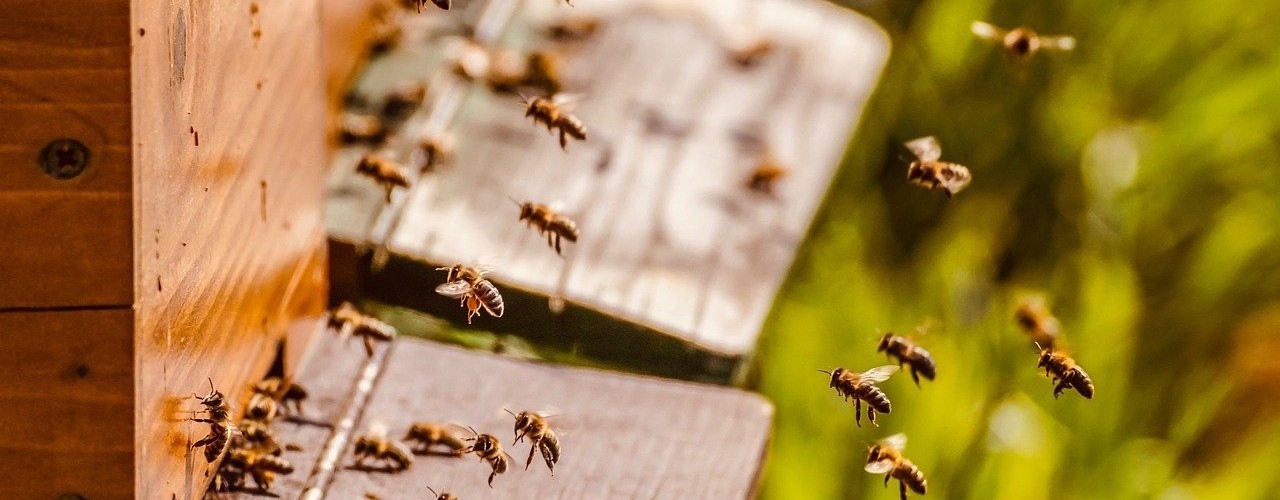EnBeeMo – Environment and Bee Monitoring
DTLab-Challenge with Mellifera e.V.

Overview
Mellifera e.V. is committed to organic farming that meets the needs of bees, man and nature in the long term. Within the framework of a DTLab Challenge, the association commissioned a group of students of the faculty for electrical engineering and information technology to find a suitable way to count the number of bees in a colony without interfering with their natural habitat.
Problem
Up to now beekeepers have had only rough possibilities to detect changes in the strength of a bee colony. Precise measurements are currently only possible with devices that influence the natural flight behaviour of bees. However, it is important for beekeepers to know exactly how the colony strength changes in order to be able to draw conclusions about certain location factors and events that may influence the size of the respective bee colony. Finding a solution to this problem could help to improve knowledge about suitable locations for colonies and beekeeping practices. The data could support associations such as Mellifera e.V. in their initiatives to protect bees.
The solution proposed by the team of students at Munich University of Applied Sciences is a system called "EnBeeMo", which uses an infrared camera in front of the beehive to record videos of bees flying in and out. The resulting images are then evaluated using a machine learning algorithm. The system was developed by the students themselves.
However, in order for the machine learning algorithm to achieve the necessary accuracy, time-consuming optimisations are necessary. For this purpose, the data scientists of the Laboratory for Systems Engineering lacked a computing infrastructure in which they could execute their optimisation algorithms in a reasonable time. In this subproject, therefore, a system had to be created that would enable the developers to quantify new algorithms and their potential.
Procedure
In order to reduce the time required for the execution of the optimisation algorithms, the system that was to be developed had to be able to execute the computationally intensive machine learning trainings simultaneously instead of subsequently, as it was the case until then. First, the following AWS services, which could potentially be considered as core systems, were evaluated with the help of an AWS solutions architect:
- SageMaker
- SQS
- EKS
- EC2
- Batch
The choice was then made for AWS Batch due to the low development effort and the large relevant functional range. In addition, AWS Batch allows a lot of control over the system and can be used flexibly. The user interacts with the machine in three basic ways:
- by uploading the application (docker)
- by controlling the experiment (own scripts, optionally with the PCR package)
- by downloading the results (S3)
With the help of this system, the Data Scientist can add any number of computationally intensive tasks to a queue with its own optimisation algorithms. The tasks are then automatically processed in parallel with several machines.
Innovation in action
The system was implemented and applied accordingly. The graphics that show an overview of the AWS resources and that were created using Cloudformation Template can be found on Github.
To use the infrastructure, a Python package was developed that can be installed with the package manager "pip". It allows to start tasks with a few lines of code computing and to query the respective results.
The finished system was used to conduct a first set of a thousand machine learning trainings. The data obtained contained valuable insights for the developers of the EnBeeMo system and formed the basis for parallel optimisation experiments with the new system.
Further trade-off graphics, which were of particular interest to the Systems Engineering Laboratory and from which data of the first parallel experiment were obtained, can be found on Github, too.
Among the trained Machine Learning models, one achieved a very good f1 value of 0.9860.
Next steps
The data scientists in the Systems Engineering Laboratory will define further experiments on the basis of the acquired data to determine a reference set of machine learning hyperparameters. This should allow the training of very accurate algorithms for bee detection with the images of the infrared camera. The system developed in the Challenge will be further used. Due to its flexibility, it is also conceivable to use EnBeeoMo for the simulation of technical-physical or other systems.
Organisation: Mellifera e.V.
Main contact person: Matthias Wick
Challenge name: EnBeeMo - Development of a cloud-based environment to optimise neural networks for bee tracking
Team: Laboratory for Systems Engineering
Faculty: FK04 - Electrical Engineering and Information Technology
Lecturer: Prof. Dr. Herbert Palm
Date: 19.10.2020
Supporting documents
The following documents were produced as part of the challenge: